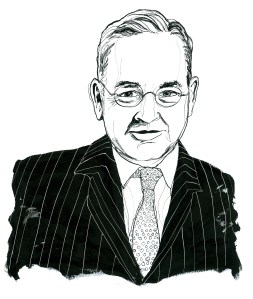Tired of Owning Part of a Building? Call This Guy
By Jotham Sederstrom January 18, 2011 7:53 pm
reprints
Madison International Realty President Ronald Dickerman has operated his New York-based company for nearly two decades. During that time, it has accumulated large investment stakes at the Seagram Building, 520 Madison Avenue and London’s Devonshire House, among other trophies. In November, the firm gained a 45 percent stake in the so-called Chrysler East building. Mr. Dickerman, 47, spoke about his firm’s investment philosophy and the thinking behind his decision to accumulate a larger ownership stake at the Chrysler East building.
The Commercial Observer: Madison International Realty has always had a unique perspective on the market. Care to elaborate on the firm’s philosophy?
Mr. Dickerman: We are a 16-year-old real estate private-equity firm and I think we do something totally unique and different in the commercial real estate space, which I think is also quite rational: We buy existing partners out of commercial real estate transactions where the ownership may be joint or fractionalized in some way and where the holding period of the property doesn’t quite match up with the temperament or the holding period or the liquidity needs of the underlying partners.
So if you walk down Park Avenue and you see all these big office towers and the nameplate says ‘Tishman Speyer’ or ‘Brookfield’ or ‘RFR Realty,’ but the fact of the matter is that when you really look at the equity structure, many of those buildings are owned in joint ventures. And the joint ventures can be a sponsor like Tishman Speyer and a big pension fund, or it could even be a syndication to a bunch of German individual investors or Dutch institutions and on and on and on. And that’s the way it works.
And I guess what we’ve recognized is that it’s a huge asset class; it’s an illiquid asset class; and because of the fractionalized ownership, there’s often friction that builds up in the equity base because these investors want an early exit.
A prime example may be Madison’s recent announcement, in November, of its decision to buy a large equity stake at the building known as Chrysler East.
Back in 2002, when Tishman Speyer renovated what used to be the Jack Kent Cook building, and they made the Chrysler East building part of Chrysler Center, they sold a 75 percent interest in the building to a German syndication that raised $100 million of equity from German, high-net-worth, individual investors. The idea was that would be a 10-year partnership-so 2002 to 2012. And sure enough, a couple of years ago-we have an office in Frankfurt-our office in Germany started to get some phone calls from limited partners in the Chrysler [East] building who wanted to sell their interests. Nothing was wrong with the building and nothing wrong with Tishman. It was just sort of an investor-fatigue issue, and people perceived that maybe we’re at the top of an economic cycle and maybe it’s time for us to sell our interest.
And yet the building wasn’t for sale. In fact, Tishman would continue to own that for many years. But, long story short, Madison stepped in, and we did an underwriting of the building and we started buying up the underlying shares of these limited partners who wanted an early exit strategy. We started buying little $25,000 interests, and over two or three years, we’ve now accumulated roughly $50 million of equity that we’ve invested in the property, and we now own somewhere around a 45 percent stake.
Typically we’re hearing about foreign investors buying rather than selling. Was this example of Germans selling their stake at the Chrysler East building an anomaly?
These investors tend to really suffer from deal fatigue. Most of the deals we invest in are old-they’ve been done six, seven, eight, nine and 10 years ago. So, yes, it is a fact that maybe there’s more foreign buying activity than selling. But what we’re finding is that it’s an immense marketplace. The size of this market is literally in the hundreds and hundreds of billions of dollars.
So from our perspective, the market is big enough, and the amount of fatigue is large enough, that we can always find spots like this. And what I also find is that a lot of these sell decisions are not so much for economic reasons-it’s for the fact that there’s something going on in their portfolio.
And what’s happening today with the building?
Well, now that it’s 2011, the debt matures in 2012 and there’s going to have to be a decision about refinancing the building, selling the building or, if you refinance it, maybe we’ll choose to extend the holding period for a period of time. Or maybe, instead, there will be an inkling that the building should be sold. But those are all decisions the partners will all make. We’re one of the largest single shareholders so we’ll have a constituent seat at the table to make all those decisions.
Is the Madison International Realty strategy typically long term, or short term?
That’s a good question. It is long term. It’s complementary to the existing ownership structure. We’re passive liquidity providers, and what we tend to do is focus on Class A core real estate with best-in-class sponsors in major metro markets with sort of moderate levered capital structures. So we’re not investing in broken buildings that have to be fixed. And we’re also not swooping in and buying no-performing loans with a loan-to-own strategy. It’s quite the contrary.
jsederstrom@observer.com


